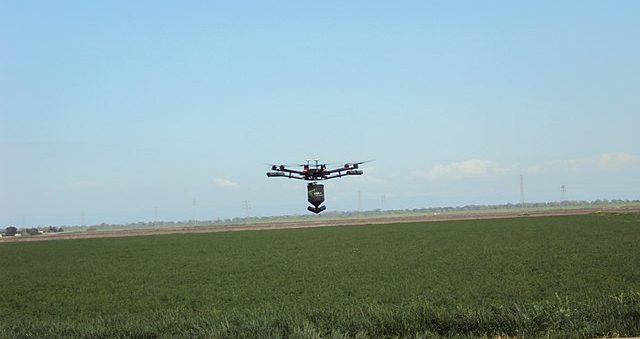The state of Kerala in southern India is creating efficiency in paddy fields one step at a time through drone farming.
According to Manorama Online on October 15, 2025, farmers are spraying, applying fertilizer and plowing in a fraction of traditional duration.
One such farmer in Malikkayal, Kottayam district employed a drone carrying 50 kg of fertilizer to finish a 5-day task in hours.
Elsewhere in the Cheepungal Malikkayar paddy area, another drone sprayed 65 acres with 65 kg/acre of fertilizer in 7 hours.
Apparently, the mixing of potash, urea and other fertilizer mixtures now need only a single worker alongside a multi-functional flyer.
More than Flying Objects Over Rice Fields
Other rice farming tasks that have traditionally either employed manual or mechanized labor are also switching over to the flying objects.
Some of these include the plowing of monsoon-time paddy fields, the sowing of seeds and later the application of pesticides.
While Kerala agriculture is already heavily mechanized, it has not been as efficient as currently with drones doing mechanical tasks.
They have even attracted the younger generation into farming through accessibility and their A320 or MiG-29 jet-lookalike aircraft designs.
During the c0c0n 2025 drone exhibition in the state capital Kochi, on October 10, chemical spray companies displayed accessible sleek machines. They lease these to farmers at only 650 rupees ($7.36) an acre.
The cost of owning one is not steep as homemade versions by two Keralites are available at 25,000 rupees ($284).
These models are composite of high-density thermocol materials and come with rechargeable batteries that power their motors.
According to builders Midhun CU and Junaid Mohammed, their GPS – and sensor – connected machines fly 200 m high for 15 minutes.
It is technologies like these that are drawing Keralites to paddy farming to save time and even avoid snake bites in soggy fields. For the larger picture on drone farming in Kerala and India at large, peruse the below stats.
India and Kerala Drone Farming Statistics
Every year from June to July, farmers across India, from Kerala in the south to Punjab in the north sow monsoon crops. Three months later in September through October, they reap some 164 million tonnes in average annual harvests. Both processes require a lot of manual and mechanical input and hence the need for drones.
Regarding which, India is a leader in the technology, with the drone manufacturing sector having a projected worth of $50 billion by 2030. Meanwhile, India’s drone market worth for all industries hit $1.23 billion in 2023, per a MDPI research paper. Researchers expects the national drone utility industry (other than manufacturing) to reach a market value of $4.87 billion by 2030. Much of this growth emanates from rapid use in mainly agricultural, defensive, transportation and healthcare sectors.
The government backs drone in agriculture, an industry that contributes 16% of the national GDP and employs 70% of rural citizens. Under Drone Rules 2021, licensing is open to farmers as long as they are citizens. By 2021 agriculture in India had attracted a drone market worth at $885.7 million, according to IndiaCSR.
Is it expensive to operate a drone in India?
Under 2018’s drone law, tiny drones attract a registration fee of 1000 rupees ($11.32) while large types 25,000 rupees ($284). The cost of homemade drones on the other hand can be as cheap as the registration itself at 25K rupees ($283.9). But industry purchases cost far more than homemade machines.
Do drones create efficiency in India’s agritech?
Drones have apparently cut pesticide spraying costs by 50%, per a Hydrebad drone maker. They have also reduced water use by 90% versus conventional farming.
How are drones changing Kerala’s agriculture?
By reducing watering, spraying, plowing and fertilizing duration, drones have made especially paddy farming in Kerala an attractive prospect. Besides, hundreds of growers using drones have one time reported a raise in yields by 40%.
